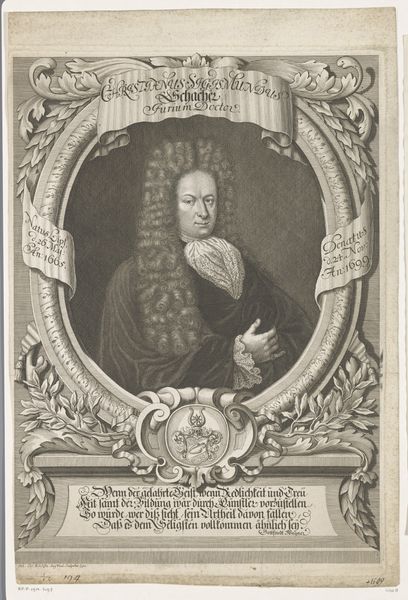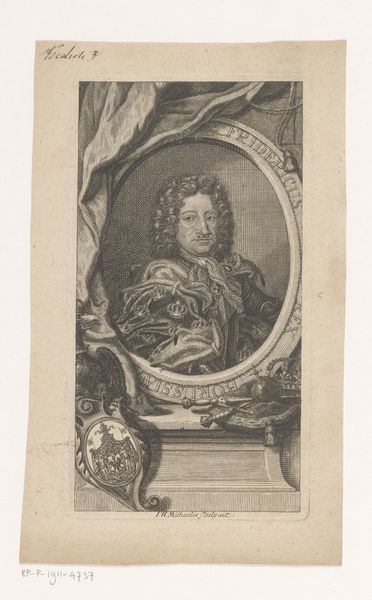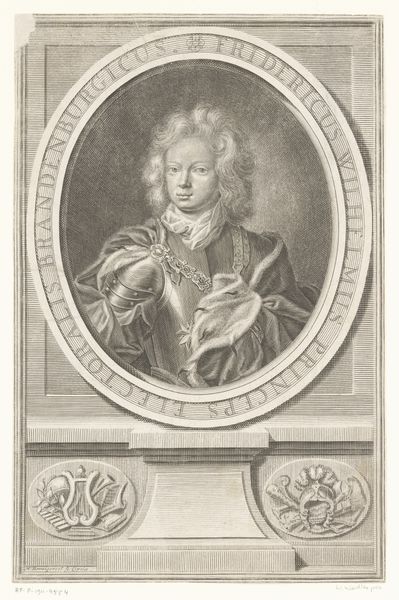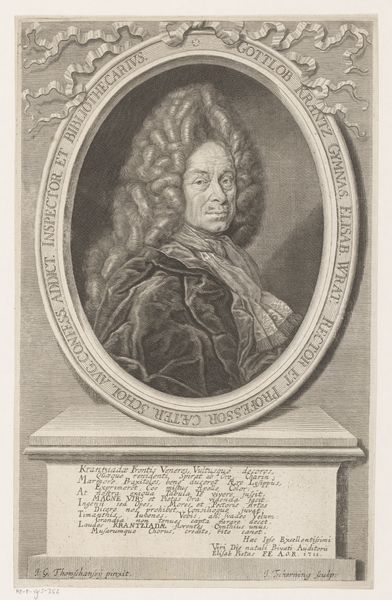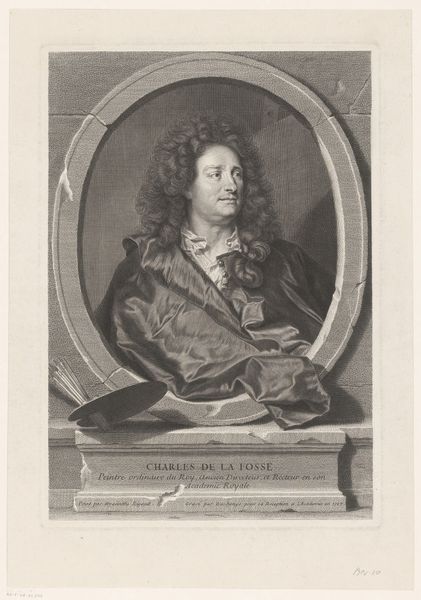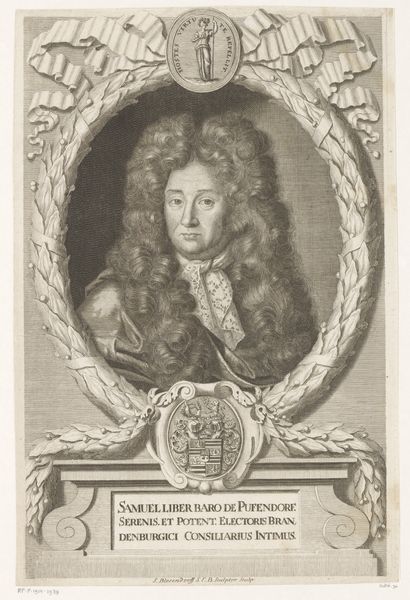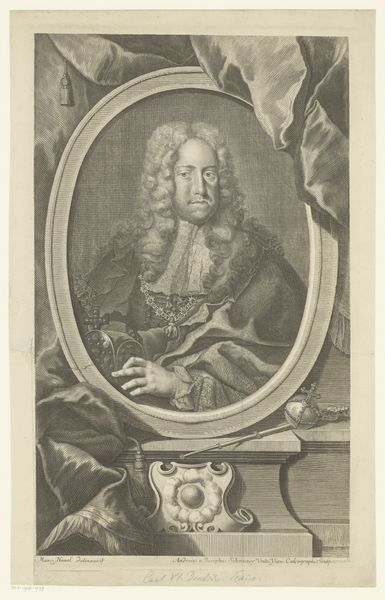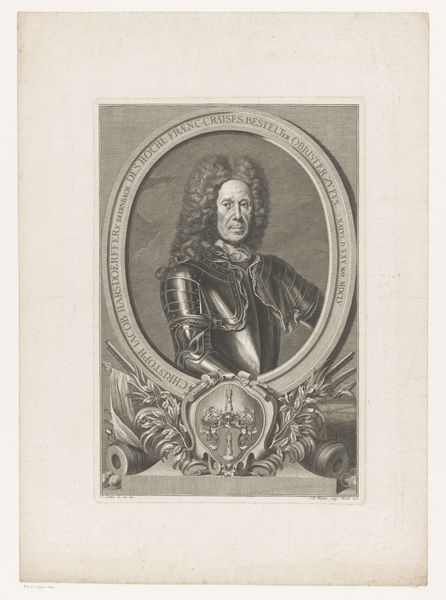
print, metal, engraving
#
portrait
#
baroque
# print
#
metal
#
history-painting
#
engraving
Dimensions: height 489 mm, width 325 mm
Copyright: Rijks Museum: Open Domain
Editor: So this is Georg Martin Preissler's "Portret van Johannes von Eberz," made in 1741. It's an engraving, and it feels very formal, very much a picture designed to convey status. How do you interpret the symbols at play here? Curator: Consider that objects gain symbolic weight as time passes. This isn't just a picture of a man; it's a carefully constructed image intended to resonate with a specific cultural understanding. The column and draped fabric suggest authority, drawing on classical allusions of power and permanence. The very act of commissioning such a portrait was symbolic, embedding Eberz within a network of visual and cultural memory. What emotions do the urn's decorations evoke? Editor: I hadn’t considered that! The urn has faces on it... theatrical masks, maybe? They give a feeling of the stage, a persona being presented. Curator: Precisely. The faces allude to roles played in life, in society. These symbols act as a kind of cultural shorthand. This image becomes more than just a likeness, it acts as a deliberate crafting of identity intended for posterity. Do you see other objects performing similar work? Editor: Well, his clothing, of course! And his wig! They show he's a man of wealth and importance. Curator: Indeed. They solidify the impression the other symbols create: tradition and the weight of expectation. Preissler is participating in shaping and affirming Eberz's social position for the future. We see echoes of power that might stretch for centuries to come. Editor: It's fascinating to think about how symbols we see as “traditional” today were carefully chosen to mean something specific in their time, with layers we might miss. Curator: Exactly. Images hold the potential to bridge the gaps between epochs, as we contemplate the cultural memories imbedded in them. It's not enough just to see, we must consider why we're seeing what we see.
Comments
No comments
Be the first to comment and join the conversation on the ultimate creative platform.
